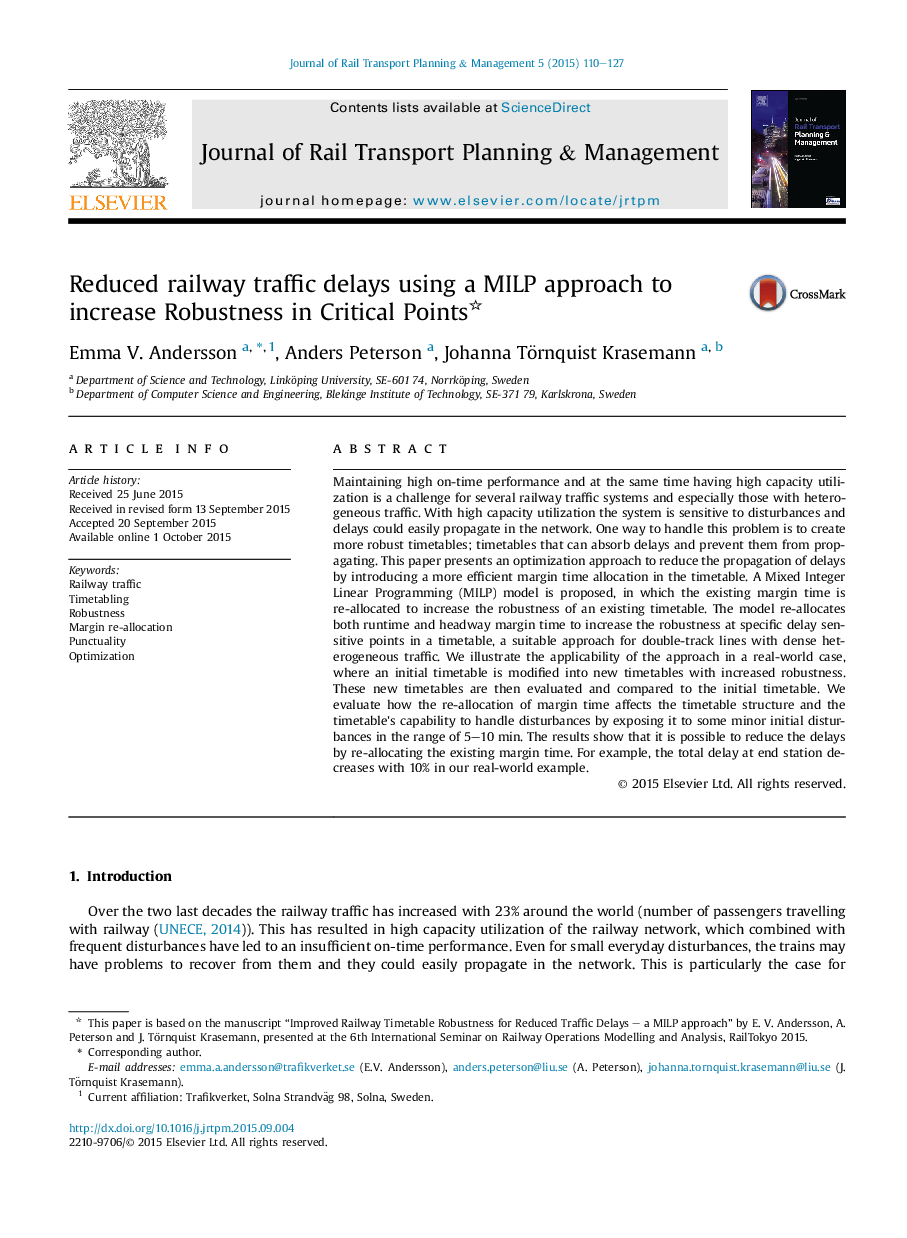| Article ID | Journal | Published Year | Pages | File Type |
|---|---|---|---|---|
| 286415 | Journal of Rail Transport Planning & Management | 2015 | 18 Pages |
•We present an approach which modifies a given timetable to reduce delay propagation.•Timetable adjustments are made to increase Robustness in Critical Points, RCP.•The proposed MILP approach re-allocates already existing margin time in a timetable.•To illustrate the applicability of the approach we use a real-word case study.•The new timetables are evaluated in terms of time shifting and delay reduction.
Maintaining high on-time performance and at the same time having high capacity utilization is a challenge for several railway traffic systems and especially those with heterogeneous traffic. With high capacity utilization the system is sensitive to disturbances and delays could easily propagate in the network. One way to handle this problem is to create more robust timetables; timetables that can absorb delays and prevent them from propagating. This paper presents an optimization approach to reduce the propagation of delays by introducing a more efficient margin time allocation in the timetable. A Mixed Integer Linear Programming (MILP) model is proposed, in which the existing margin time is re-allocated to increase the robustness of an existing timetable. The model re-allocates both runtime and headway margin time to increase the robustness at specific delay sensitive points in a timetable, a suitable approach for double-track lines with dense heterogeneous traffic. We illustrate the applicability of the approach in a real-world case, where an initial timetable is modified into new timetables with increased robustness. These new timetables are then evaluated and compared to the initial timetable. We evaluate how the re-allocation of margin time affects the timetable structure and the timetable's capability to handle disturbances by exposing it to some minor initial disturbances in the range of 5–10 min. The results show that it is possible to reduce the delays by re-allocating the existing margin time. For example, the total delay at end station decreases with 10% in our real-world example.
